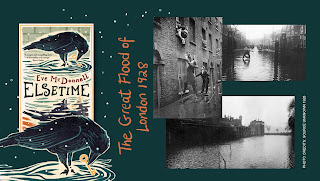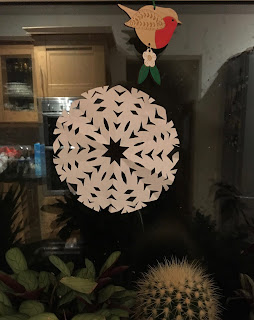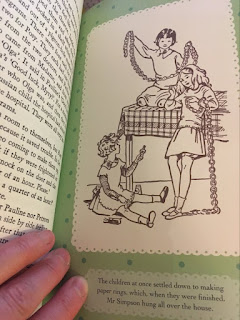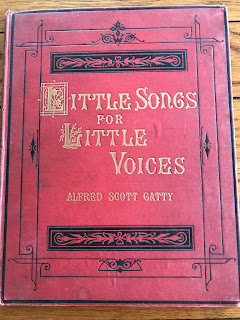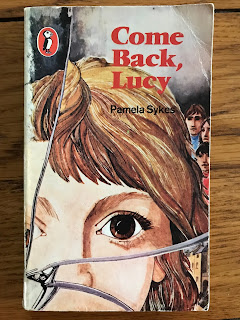This week we are delighted to introduce our first guest blog post, by longstanding friend of the Time Tunnellers, Eve McDonnell. Eve is the award-winning author of Elsetime, a beautifully written time-travel novel which we all loved. As well as being a writer, Eve is also an artist and designer, and designed the wonderful Time Tunnellers’ logo and banners for us.
Read Eve’s guest post to find out more about her time travelling, her unforgettable characters - Needle and Glory and their pet crow, Magpie - and the true story behind the devastating flood in Elsetime.
And look out for more guest posts from children’s historical fiction writers on the Time Tunnellers blog in the months to come!
Children's author Eve McDonnell
If you had one superpower, what would it be?
Without question, mine would be the ability to time travel. Sometimes, perhaps when I am on a bustling shopping street or a quiet country lane, I close my eyes for a second and imagine that, when I open them, I will have travelled one hundred years back in time. What would I see? Would the air smell unusual? What sounds would I hear? Would the birds even sing to a different tune? I guess it was this curiosity that led me to one of my favourite pastimes, treasure hunting – searching the pebbles alongside a river or the sea for something sparkling: an old button once part of a queen’s gown, perhaps, or a key to a mythical treasure chest, or a war medal from a hero who saved countless lives. With the help of my imagination, I guess I do time travel – I can see and feel each treasure’s history by simply holding it in the palm of my hand.
It’s no wonder a hobby so rich in possible stories was the inspiration for my children’s novel Elsetime with its tale of a young 1860’s mudlark called Needle, searching the foreshore for treasures he could sell. Glory, a jeweller’s apprentice, sprung to mind too, and I imagined her taking those muddy finds and transforming them into treasures to behold under the eyes of her strict mistress, Mrs Quick. Glory and Mrs Quick had to be from the 1920s, my imagination assured me, but I wasn’t quite sure what was going to happen to my new-found friends.
Then I found a newspaper clipping. It told of a real-life tragic event almost lost to history: the Great Flood of London in 1928. At its epicentre was Needle’s haunt – the stretch of foreshore alongside the Tate Gallery (now known as Tate Britain). I needed to know more, and my research began.
Almost a century ago, at the source of the Thames, families enjoyed a snowy Christmas akin to those portrayed in picture-perfect postcards. But, quick as a wink, the snow thawed, sending torrents of water along streams and brooks that fed the Thames. A deluge of rain in the days that followed raised the level of the great river higher and higher as it twisted and turned its way towards the bustling centre of London and out towards the sea.
As Londoners partied away the Twelfth Day of Christmas or snuggled their loved ones into bed in old basement flats, the raging river met its match: a powerful storm in the North Sea. At the turn of the tide, waves swelled higher at the mouth of the Thames than any ever seen before. Seawater tunnelled its way up the river, clashing with the deluge of snowmelt and rainwater. X marked the spot where the river narrowed and its depth deepened following foolish dredging to allow passage to larger ships. Not long after midnight, the embankment walls near the Tate Gallery gave way.
Freezing cold water raced down stone steps and into the homes of poor basement-dwellers, trapping them before they even knew their fate. Muddy water inundated the basement galleries of the Tate Gallery, destroying many fine pieces of art, including several priceless Turner paintings and drawings. Big Ben was surrounded, the Underground submerged. The moat at the Tower of London filled for the first time in nearly a century.
Fourteen souls lost their lives that night and, as my research deepened, so too did my shock and sadness when I read the names listed on that Daily Mirror 1928 newspaper clipping. One name stood out: Mrs Quick – a name I had already created for the owner of the Jewellery Emporium where Glory worked. That was a big gulp moment.
As I stared down at Mrs Quick’s name, it felt like a message from the past. Perhaps, with Mrs Quick’s help, I really did time travel to the night of the 6th of January 1928. Maybe that newspaper clipping was my time machine, my imagination its fuel, and my planned destination would ensure the story of the Great Flood of London in 1928 was finally told.
To when would you time travel?
Eve grew up in Dublin before moving to the beautiful countryside of Wexford where she lives halfway up a hill with her husband, twins, Happy the dog and Fusspot the cat. Eve embarked on a career as an artist and worked in graphic design, brand development and marketing. Having recognised the similarities between a blank canvas and a blank page, Eve’s writing career kicked off following a visit to a fortune-teller who told her to Write! Write! Write! On the rare occasion where her head is not stuck in a children’s story, Eve enjoys facilitating creative writing and crafting workshops, and painting everything from rather grown-up pieces to fun children’s murals.
Eve’s debut novel for 9-12 year olds, ELSETIME, was published in 2020 by Everything With Words and was inspired by a real-life tragic event: The Great Flood of London in 1928.
Meet mudlark Needle and an impetuous jeweller’s apprentice called Glory; a special crow and a hard-nosed taskmaster; a distinguished inventor and a deadly flood – all living their lives in Inthington Town just a stone’s throw from each other but with many decades between.
Cover and internal illustrations by Holly Ovenden.
Order a copy of ELSETIME from your local independent bookshop or you can visit The Rocketship Bookshop in the UK or Halfway Up The Stairs in Ireland.
Find out all about Eve on www.evemcdonnell.com and follow her on Twitter @Eve_Mc_Donnell.




